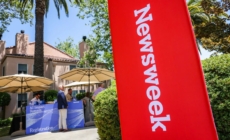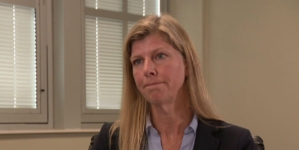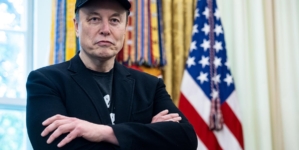The Federal Reserve on Wednesday lowered its benchmark interest rate by 0.25 percentage points, marking its second consecutive rate cut this year as the U.S. economy contends with a sharp slowdown in hiring.
The Fed cut lowers the federal funds rate — what banks charge each other for short-term loans — to between 3.75% and 4%, down from its prior range of 4% to 4.25%. The Fed reduced rates by the same amount in September, its first cut since December of 2024.
The central bank’s move to ease monetary policy is aimed at shoring up economic growth by lowering borrowing costs, spurring consumer spending and investment by businesses. Although the ongoing U.S. government shutdown has delayed release of the Labor Department’s September jobs report, other indicators point to a continued slowdown in hiring. The ADP National Employment Report, for instance, showed private-sector payrolls shrinking by 32,000 last month.
The Federal Reserve’s so-called dual mandate requires monetary policymakers to keep both inflation and unemployment low, with Fed Chair Jerome Powell noting last month that risks to the labor market are growing.
“In resuming its rate-cutting cycle, the Fed is responding primarily to signs of weakening labor demand,” Seema Shah, chief global strategist at Principal Asset Management, said in an email. “The apparent softening in the jobs market appears to have prompted a preemptive move to prevent further deterioration, with September’s rate reduction likely marking the start of a sequence of cuts.”
Shah added that she expects an additional 0.25 percentage point cut at the Fed’s Dec. 10 meeting. The Federal Open Market Committee, the panel that sets the Fed’s monetary policy, isn’t scheduled to meet on interest rates in November.
Inflation battle
While the Fed is now focused on weakness in the labor market, its battle against inflation isn’t over. The Fed cranked rates higher after consumer prices soared during the pandemic, with inflation hitting a 40-year high of 9.1% in June 2022.
Because higher interest rates make it more expensive to borrow, businesses and consumers typically react by paring spending, which dampens demand throughout the economy and cools inflation. Since mid-2022, inflation has receded to an annual rate of 3% as of September, although that remains higher than the Fed’s target of a 2% annual pace.
While the Trump administration’s wide-ranging tariffs are starting to trickle through to consumer prices, the impact has been more muted than economists had predicted earlier this year. Some businesses are eating some of the tariff costs, while others stocked up on imports earlier in the year to get ahead of the import duties.
“Though inflation is still higher than comfortable, the jobs market is holding on to signs of weakness, and their desire to stimulate the economy further is likely to continue outweighing inflation concerns,” said Steve Rick, chief economist at financial services company TruStage.































